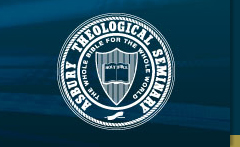Files
Download Full Text (313 KB)
Summary
1) To identify the key historical period of the Reformation and post- Reformation era. 2) To understand the major Reformation traditions—Lutheran, Anabaptist, Reformed, and Anglican—and their theologians, especially in terms of faithfulness to the teachings of Scripture, the nature of the church, the sacraments, and soteriology. 3) To grasp the significant issues pertaining to salvation in the Protestant Reformation and understand the issues relating to Roman Catholicism. 4) To understand the Roman Catholic response to the Protestant Reformation including the Council of Trent. 5) To recognize and evaluate the major issues involved in the Church’s ministries within the Christian community and its efforts to relate to the social and political structures of the modern world. 6) To explore the eighteenth-century Enlightenment’s impact on the church. 7) To articulate the Puritan, Pietist, and Methodist traditions, and to develop an increased awareness of the significant contributions of Wesleyanism to the broader Church. 8) To demonstrate an understanding of the First and Second Great Awakenings. 9) To understand the cultural and theological context of historical criticism and its effect on the nature and authority of Scripture. 10) To reflect on the problems and possibilities of church/state relations during this period. 11) To explore the interaction between church and culture, as the leading theologians developed their theologies. 12) To survey the major religious non-Christian traditions, with a view to the students’ future ministries in evangelism, nurture, and leadership. 13) To trace the rise of modern missions and how Christianity became a global religion.
Publication Date
January 2005
Publisher
Asbury Theological Seminary
Keywords
ExL, Summer, History, Fall, Church, CH502, Overview
Language
English

